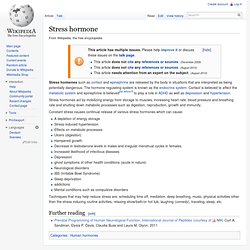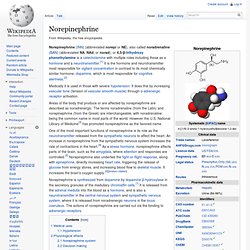

Stress hormones. Stress hormones act by mobilizing energy from storage to muscles, increasing heart rate, blood pressure and breathing rate and shutting down metabolic processes such as digestion, reproduction, growth and immunity.

Constant stress causes continual release of various stress hormones which can cause: A depletion of energy storageStress-induced hypertensionEffects on metabolic processesUlcers (digestion)Hampered growthDecrease in testosterone levels in males and irregular menstrual cycles in females.Increased likelihood of infectious diseasesDepressionghost symptoms of other health conditions (acute in nature)Neurological disordersIBS (Irritable Bowl Syndrome)Sleep deprivationaddictionsMental conditions such as compulsive disorders Techniques that may help reduce stress are: scheduling time off, mediation, deep breathing, music, physical activities other than the stress inducing routine activities, relaxing show/bath/or hot tub, laughing (comedy), traveling, sleep, etc. Cortisol. Steroid hormone; as a medication, known as hydrocortisone Cortisol is a steroid hormone, in the glucocorticoid class of hormones.

When used as a medication, it is known as hydrocortisone. Health effects[edit] [edit] In the early fasting state, cortisol stimulates gluconeogenesis (the formation of glucose), and activates antistress and anti-inflammatory pathways. In the late fasting state, the function of cortisol changes slightly and increases glycogenesis. Elevated levels of cortisol, if prolonged, can lead to proteolysis (breakdown of proteins) and muscle wasting.[7] Several studies have shown that cortisol can have a lipolytic effect (promote the breakdown of fat). Immune response[edit] Cortisol prevents the release of substances in the body that cause inflammation. Cortisol can weaken the activity of the immune system. Cortisol stimulates many copper enzymes (often to 50% of their total potential), including lysyl oxidase, an enzyme that cross-links collagen, and elastin.
Norepinephrine. Medically it is used in those with severe hypotension.

It does this by increasing vascular tone (tension of vascular smooth muscle) through α-adrenergic receptor activation. Areas of the body that produce or are affected by norepinephrine are described as noradrenergic. The terms noradrenaline (from the Latin) and norepinephrine (from the Greek) are interchangeable, with noradrenaline being the common name in most parts of the world. However the U.S. National Library of Medicine[3] has promoted norepinephrine as the favored name. One of the most important functions of norepinephrine is its role as the neurotransmitter released from the sympathetic neurons to affect the heart.
Medical uses[edit] Norepinephrine is used for hypotension. Epinephrine. Epinephrine, also known as adrenalin or adrenaline, is primarily a medication and hormone.[3][4] As a medication it is used for a number of conditions including: anaphylaxis, cardiac arrest, and superficial bleeding.[1] Inhaled epinephrine may be used to improve the symptoms of croup.[5] It may also be used for asthma when other treatments are not effective.

It is given intravenously, by injection into a muscle, by inhalation, or by injection just under the skin.[1] Common side effects include shakiness, anxiety, and sweating. A fast heart rate and high blood pressure may occur. Occasionally it may result in an abnormal heart rhythm. While the safety of its use during pregnancy and breastfeeding is unclear, the benefits to the mother must be taken into account.[1] Medical uses[edit] Epinephrine vial 1 mg (Adrenalin) Cardiac arrest[edit] Anaphylaxis[edit] Epinephrine is the drug of choice for treating anaphylaxis. Asthma[edit] Croup[edit] Local anesthetics[edit] Adverse effects[edit]